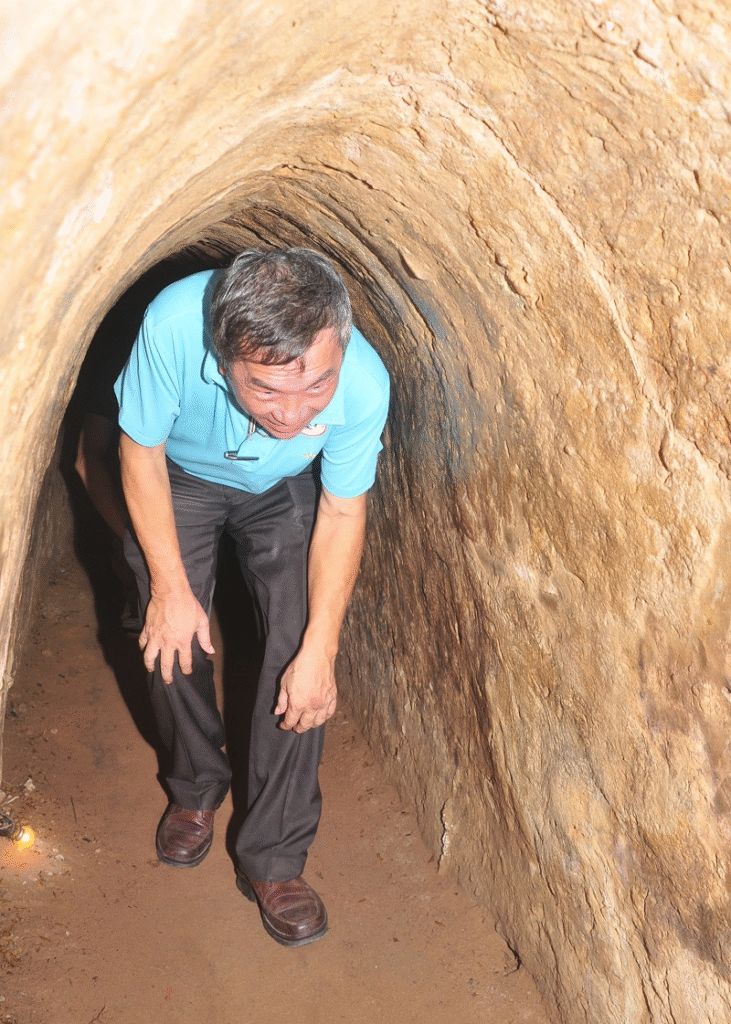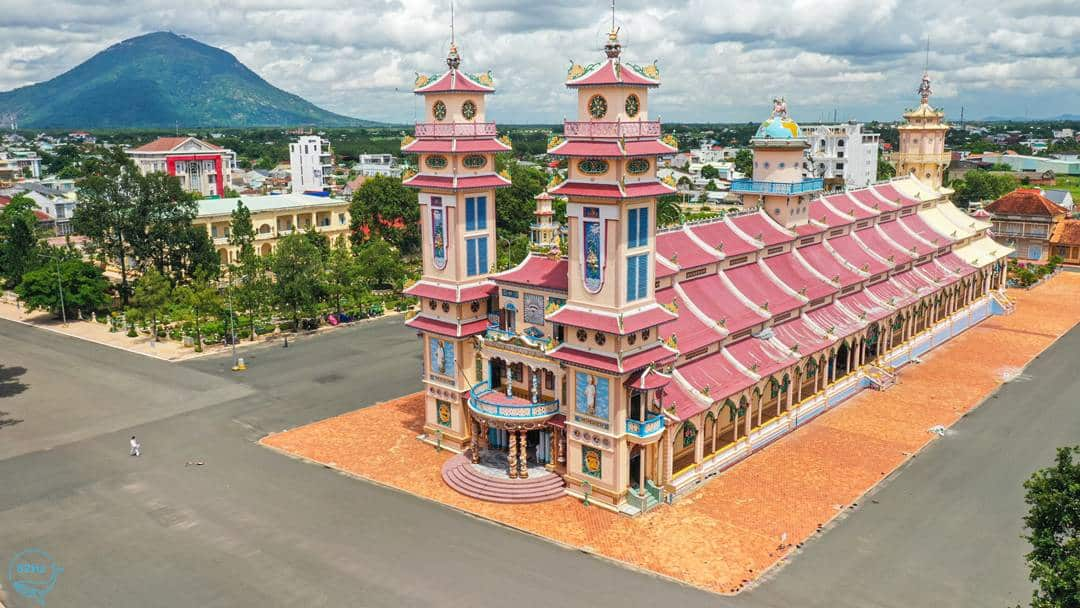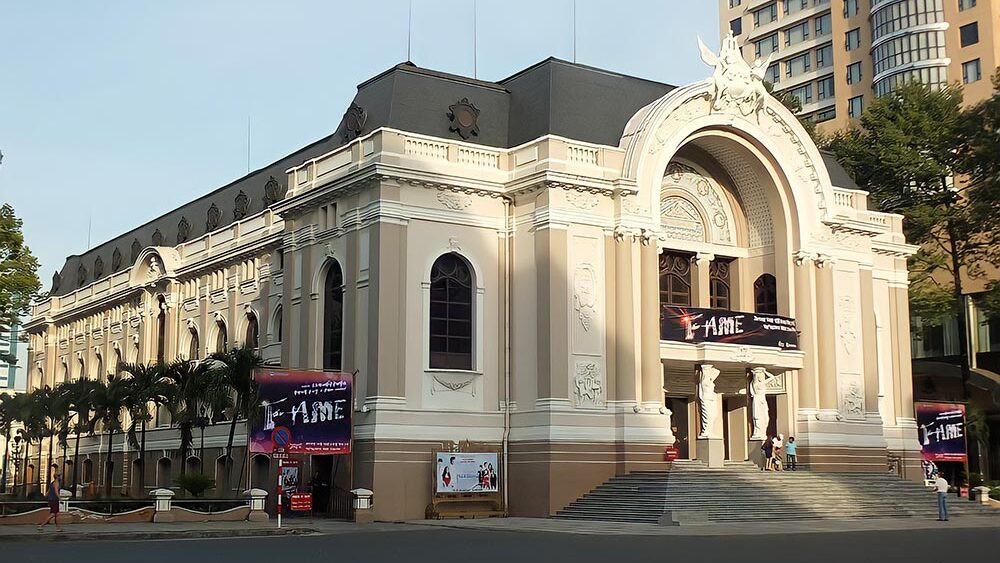INTRODUCTION TO THE CU CHI TUNNELS HISTORICAL SITE

Cu Chi is a suburban district located in the northwest of Ho Chi Minh City, Vietnam, famous for the Củ Chi Tunnels Historical Site – an underground defensive system stretching about 250 km, consisting of tunnels, living quarters, kitchens, and field hospitals, built for Vietnamese soldiers and civilians to fight during the resistance wars.
Cu Chi Tunnels – A Heroic Feat
Located about 70 km from Ho Chi Minh City, the Cu Chi Tunnels are a miniature battlefield showcasing the ingenuity and creativity of the Cu Chi people are soldiers during the prolonged and fierce 30-year resistance war against foreign invaders, striving for independence and freedom for the nation.
With its legendary feats, the Cu Chi Tunnels have entered the heroic history of the Vietnamese people as a 20th century legend and become a famous world site. This unique underground wonder stretches about 250km, branching like a spider’s web beneath the earth, and including interconnected works such as trenches, combat bunkers, dining and sleeping areas, meeting room, living spaces, medical chambers, storage depots, wells, and the famous smokeless Hoang Cam kitchen.
The true stories of the tunnels surpass human imagination. Just crawling through a short section, one can understand how the poor land of Cu Chi endured 21 years against a vastly superior enemy – larger in number, highly trained, and equipped with modern weapons and technology.

Get exclusive updates
Enter your email and we will send you the best travel tips content.
Explore Cu Chi Tunnels with Saigon Taste Tours
Underground Village of Cu Chi
Origins of the tunnels
During the resistance war against the French (1945-1954), revolutionary fighters hid in secret bunkers in enemy-occupied areas, protected by the people. These bunkers were mainly dug into the ground with a single narrow entrance and an air hole for breathing. When the entrance was sealed, enemies walking above could hardly detect them.
Cadres living in enemy-controlled zones hid underground by day and only emerged at night in carry out activities. However, secret bunkers had a weakness: one discovered, they could easily be surrounded or destroyed by the superior enemy forces. From this, the idea emerged to extend bunkers into longer tunnels with multiple hidden exits – Both for shelter and for fighting back, as well as escaping dangerous situations.

The first tunnels in Cu Chi appeared in 1948 in Tan Phu Trung and Phuoc Vinh An communes. Initially, these short, simple sections served to hide documents, weapons and cadres. Later, they spread to many communes. From 1961 to 1965, the guerrilla warfare of the people of Cu Chi grew strong, inflicting heavy losses on the enemy and contributing to defeating America’s “Special war” strategy.

During the resistance war against the U.S.the tunnels expanded greatly, especially after 1966 when the U.S. launched Operation Crimp and stationed the 25th Infantry Division at the Dau Tieng base. Despite intense sweeps, the Saigon – Cho Lon – Gia Dinh Regional Party Committee and Cu Chi District Party Committee led the people to stand firm, protecting the crucial strategic base. With the slogan ‘Not an inch forward, not a step back’, soldiers and civilians risked their lives, digging day and night to build tunnels establish ‘combat hamlets’ and ‘American-Killing belts’, Creating a strong defensive front to encircle and destroy the enemy.

The tunnel-digging movement spread widely, with men and women, young and old, all taking part. Using only primitive tools – hoes and bamboo baskets – the people in Cu Chi created an immense underground system stretching hundreds of kms, connecting villages into a miraculous ‘underground village’. Disposing millions of cubic meters of excavated soil into bomb craters, shaping termite mounds, spreading it in fields, and planting crops on top – soon erasing all traces.

Exactly one year after Operation Crimp, on January 8, 1967, the U.S. launched Operation Cedar Falls into the “Iron Triangle” to destroy bases and revolutionary forces. By this time, the tunnel system had reached about 250 km in total length.
Structure of The Tunnels
The tunnels twist and turn underground, with the main “backbone” branching into countless passages, some interconnected, others ending independently depending on terrain. Many led to the Saigon River, providing escape routes to Ben Cat base (Binh Duong) when danger arose.
Though not very deep, the tunnels resisted artillery and the weight of tanks and armored vehicles; deeper sections even withstood small bombs. Some parts had two or three levels (“upper” and “lower”). Hidden trapdoors connected levels. Strategic choke points blocked enemies or chemical gas. Narrow sections required fighters to squeeze through. Ventilation shafts were cleverly camouflaged. Multiple hidden exits doubled as sniper posts or combat bunkers, catching enemies off guard. In dangerous areas, traps, punji pits, and other deadly devices were placed.
Around tunnel entrances, minefields, punji pits, and booby traps (so-called “death zones”) were arranged, including anti-tank mines and anti-helicopter cluster-bomb launchers.

WAR FROM UNDERGROUND
From the beginning, when U.S. forces invaded Cu Chi, they faced fierce resistance. Realizing the tunnels were the source of attacks, they tried relentlessly to destroy them, using five main tactics:
- Flooding with water: In Operation Crimp (Jan 8–19, 1966), 12,000 troops tried pumping water into tunnels. Lacking sufficient volume, the effort failed, destroying only 70m of tunnels. Meanwhile, 1,600 U.S. casualties, 77 armored vehicles destroyed, and 84 aircraft downed marked heavy American losses.
- “Tunnel rats”: During Operation Cedar Falls (Jan 1967), 30,000 troops attacked the Iron Triangle, leveling villages and causing civilian suffering. 600 engineers, called “tunnel rats,” attempted to destroy tunnels with explosives and poison gas. They managed only minor damage compared to the vast system. The operation failed with U.S. losses of 3,500 men, 130 vehicles, and 28 aircraft.
- War dogs: 3,000 German Shepherds were used to sniff out tunnels. Initially effective, but guerrillas devised countermeasures—pepper and chili powder, later more effective tricks—eventually neutralizing the dogs. Hundreds died or were killed. This tactic also failed.
- Bulldozers and armored vehicles: U.S. forces tried ripping up tunnels with machines, pumping in chemicals, and using loudspeakers to call for surrender. Yet, the tunnel network was too vast, and guerrillas fought back fiercely, forcing abandonment of the tactic.
- Planting “American grass”: A strange imported grass grew 2–3m high, spreading quickly, exposing targets to airstrikes and burning like tinder in dry season. Though destructive, it could not defeat the revolution. From the tunnels, Cu Chi’s fighters joined the Tet Offensive of 1968, striking major targets in Saigon: Independence Palace, U.S. Embassy, Radio Station, Tan Son Nhat Airport, etc.
After Tet, the enemy adopted “search and hold” tactics, but the tunnels were reinforced, securing revolutionary bases near Saigon. In Spring 1975, forces from Cu Chi advanced to liberate Saigon, ending the war at noon on April 30, 1975.
THE WAR AND SACRIFICES
Through 21 years of resilient struggle, the people of Cu Chi fought 4,269 battles, capturing 8,581 weapons, eliminating over 22,582 enemies (including 10,000 Americans, 710 captured), destroying 5,168 military vehicles (mostly tanks and armored cars), downing 256 aircraft, sinking 22 boats, and dismantling 270 enemy posts.
Honors awarded:
- “Cu Chi – Iron Land, Bronze Citadel” by the National Liberation Front of South Vietnam.
- Twice awarded Hero of the People’s Armed Forces by the Socialist Republic of Vietnam.
- To date: 19 Heroic Communes, 39 Armed Forces Heroes, 1,277 Heroic Vietnamese Mothers, 1,800 decorated fighters, two “Fatherland’s Bronze Citadel” Orders, and over 500 military decorations for individuals and collectives.
Yet, Cu Chi endured immense sacrifice: 50,454 raids, 10,101 civilians killed, over 10,000 cadres and soldiers fallen, 28,421 homes burned, 20,000 hectares of farmland and forests destroyed. War left deep scars of loss, poverty, and hardship lasting many years after liberation.
Today, the once “white zones” have revived vigorously. Above the tunnels now lie lush fields and bustling villages. New public works are rising, healing wartime wounds. Cu Chi is transforming, advancing toward socialism with a strong agricultural base, as one of Ho Chi Minh City’s key food-producing regions and a solid military stronghold guarding the city’s northwest gateway.
✨If you don’t receive a response, please contact me directly via my WhatsApp number or send me an Email📱 WhatsApp: +84 383 624 632 📧 Email: info@saigontastetours.com 🌐 Website: www.saigontastetours.comBook a Once-in-a-Lifetime Experience with us
OUR EXPERIENCES
Ao Dai Motorbike Tours Cu Chi Tunnels Excursions Ho Chi Minh Day Trips, and Combos Mekong Delta Adventures Saigon: Culture & History Saigon Street Food Southern Vietnam Coastal Adventures Taste Of Saigon Tours
Don’t leave just yet—stay with us a bit more!






Leave a Reply